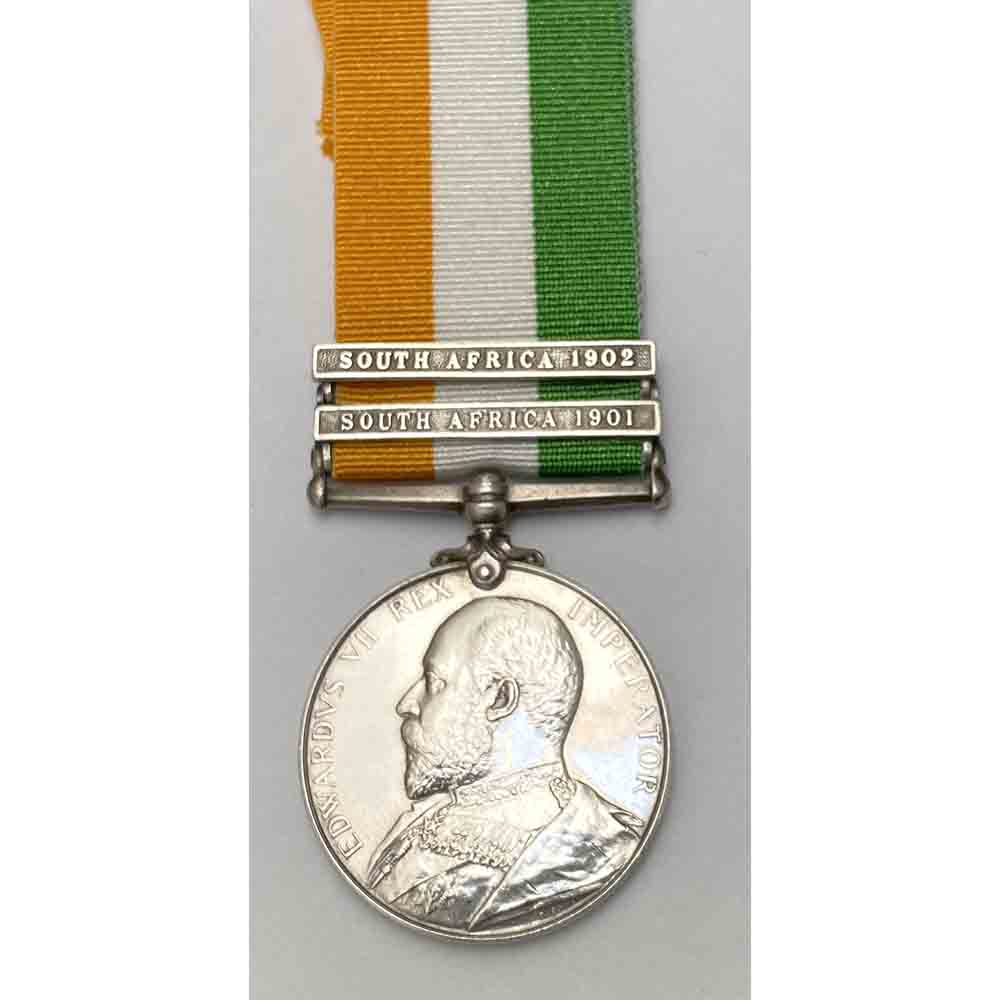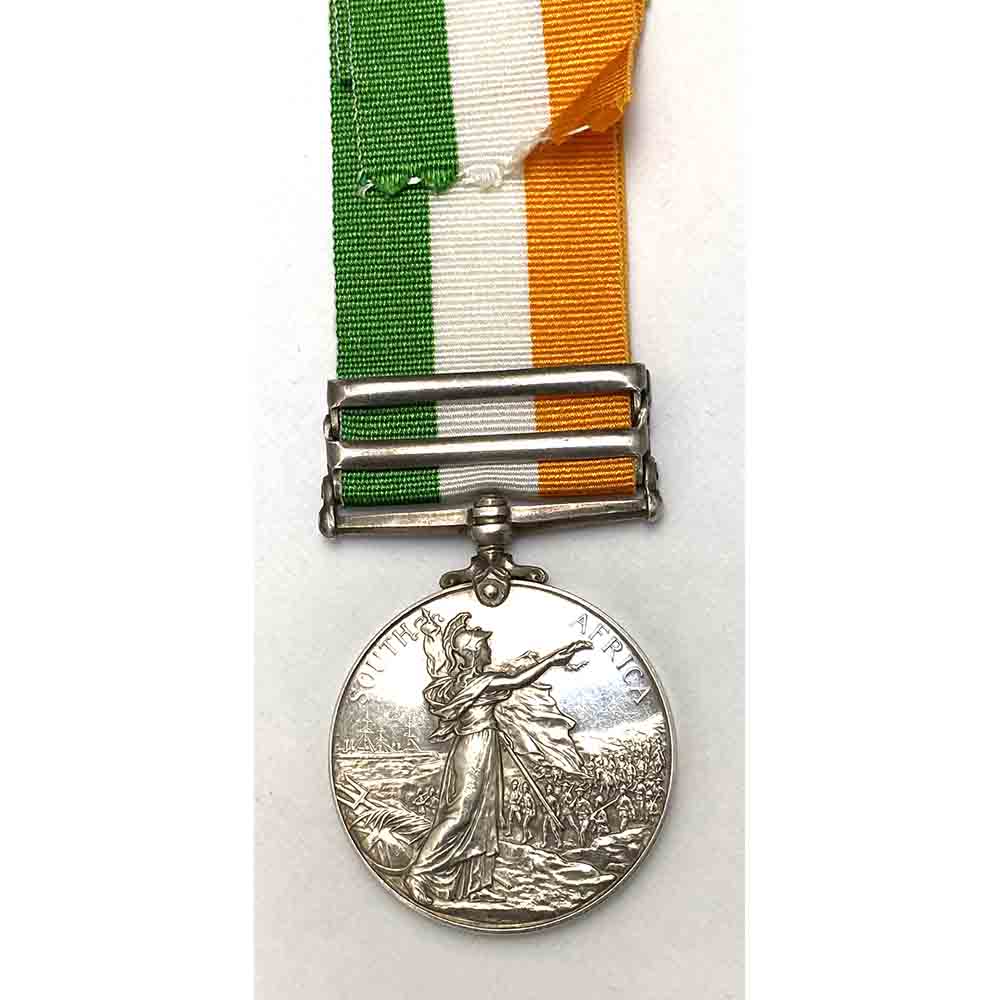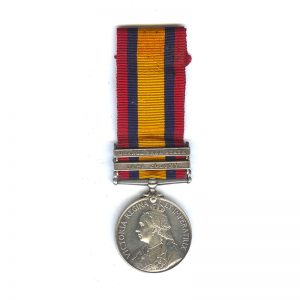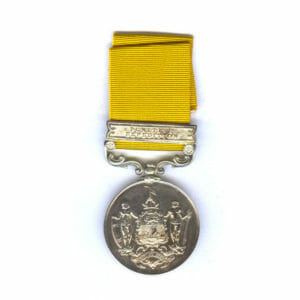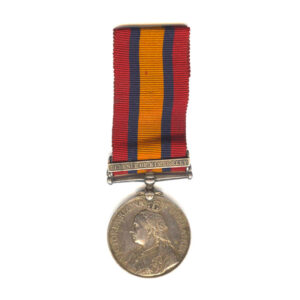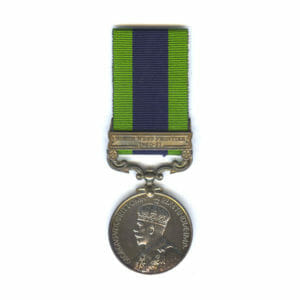Description
King’s South Africa, 2 bars, SA 1901, SA 1902, 1361 Trooper Dunbar Haire, Steinaecker’s Horse.
Dunbar Haire enlisted in the regiment 25th April 1901, an Irishmen aged 28 who stood 5’ 9” tall. He earned the QSA, 3 bars, with Tugela Heights, Relief of Ladysmith & Transvaal, serving first in the Natal Police from 11/10/1899, until 11/6/1900, He was discharged from Steinacker’s Horse on 31/5/1902. His Medal was dispatched to Chicago, to the ‘Hills Hotel’ and Haire seems to have emigrated to the USA after the Boer War. He arrived at Ellis Island, New York City on 17th August 1904, to join his sister-in-law Mrs R Taylor in New York.
He died on September 18th 1908 in Manhattan, New York, aged 36.
The Regiment was under the command of a German by the name of Colonel Ludwig Steinacker D.S.O., a former Lieutenant in the Prussian Army, who in only a few months time rose from a Private in the scouts to a Major commanding his own unit, he was only 1.5 metres tall but sported a large moustache and an even larger sword, he saw himself as the ‘Napoleon’ of the lowveld, regarded by a Boer General as ‘The Second Musolino’ and considered by Swaziland a ‘Soldier of Fortune’ and even dubbed the ‘Bushveld Bismark’, he sported extravagant uniforms of his own design, Silver Spurs, Naval style frock coat, heavily braided epaulettes. Him and his men were incredibly dangerous & ruthless, but had become one of the most complete and self-contained units in the country. Having their own intelligence, transport, workshops etc.
The unit’s official task was to seal the border between Transvaal and Mozambique. The force additionally employed 300 blacks, mostly Thonga, in intelligence work inside Swaziland and along its borders, maintaining a small garrison of fifty men in Bremersdorp.
The infamous unit included some of the finest shots in Africa, the most dangerous men Steinacker could gather, an assortment of desperadoes and vagabonds. including Kaffir Storekeepers, Smugglers, Spies and scoundrels of every description, including cowboys and mercenaries, paid 10 shillings a day plus pickles, fresh milk and whisky, they spent at least as much time enriching themselves by looting Swazi homesteads, ransacking abandoned white property and gun-running to Mozambique as they did resisting the Boers. The Swazi Council declined to recognise the force as a legitimate British unit, refused to cooperate with its members and pressed for its withdrawal from Swaziland.
Kitchener as this point had turned a blind eye to their actions with one of his aides noting that ‘No one thinks Steinacker is an Angel but he has his uses’
It is reported that ‘Their primary occupation appeared to be looting, and the kaffirs attached to it were used for scouting, fighting and worse. Many families in the northern part of Lydenburg had been attacked in lonely spots and on one occasion the white men on one of these marauding expedition had allowed the kaffirs to murder ten defenceless people with their assegais and hatchets, capturing their cattle and other property.’
Not long after Trooper Haire joined the unit, This small unit of men had single-handedly terrorised Swaziland. They had then ‘imprisoned’ Prince Mancibane Dlamini on suspsicion of Boer Sympathies. The Swazi Council had had enough of their antics and told General botha that a group of British ‘robbers’ were operating in Swaziland without her consent. On 21st July 1901, the Ermelo commando led by Tobias Smuts crossed the Sqazi boeder and surrounded Bremersdorp, where Steinacker’s men were billeted. The commando soon overpowered the unit, took forty-one prisoners, captured a haul of firearms, seized four hundred cattle and fifty horses, they liberated Mancibane and proceeded to incinerate the town.
After the war Steinacker had attempted to keep his unit going, but an unfortunate attempt tot take part in the coronation parade in London of King Edward VII led to him being stripped of his command. He briefly returned to Komatipoor before attempting to farm cotton near Pilgrim’s Rest. There he lost everything, including his mind, Civilian life did not suit him. he was arrested by the police for planning to murder a former colleague but committed suicide by poisoning himself as he was being taken into custody.
